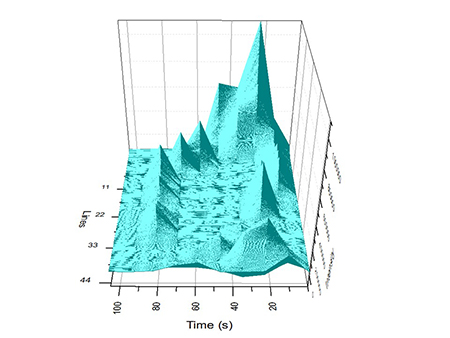Raman Imaging and Nanoparticles

Over the past four decades, Surface-Enhanced Raman Spectroscopy (SERS) has emerged as one of the most sensitive spectroscopic techniques to date, with detection ranging all the way down to single molecules. Advances in recent years in the production and functionalization of gold and silver nanoparticles have created a new window of opportunity for this technique, which allows for the detection and characterization of nanoparticles in solution or assembled to surfaces while utilizing the unique properties of the nanoparticles themselves, including a relatively facile surface, low toxicity to humans, natural tendency to aggregate around tumors, and ease of functionalization.
The Verbeck group has utilized a rapid-prototyping (RP) machine to create different polymer surfaces which have been both evaporatively-sputtered and soft-landed via ion mobility to create a gold or silver surface coating. Previous research has shown that a gold coating by soft-landing ion mobility (SLIM) on silicon wafers can be utilized as a reusable SERS substrate, given the robustness of soft-landed gold nanoparticle aggregates and ease of production. These soft-landed surfaces have been analyzed by Raman spectroscopy, AFM, and SEM to determine optimal particle diameter, deposition parameters, and ease of reuse.
SERS coatings and functionalized nanoparticles have the potential for a wide array of purposes, including protein detection, cancer treatment, and microfluidics. Our current research focuses on synthesis and functionalization of gold monolayers with short-capped polyethylene glycol (PEG) chains for detecting proteins such as gluten and creating new chemistry at the surface of rapid-prototyped devices. Future work may include expanding our research into rapid-prototyped microfluidics devices and applications in nanomanipulation and cancer research.